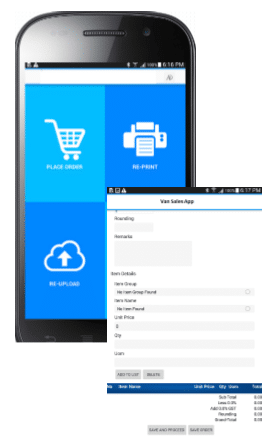Digital transformation has to be carried out on a step by step approach. First, you will need a backend or ERP software that can support this digital transformation. SAP Business One is one software that can support this mission. Please see below for examples of digital transformation that can be implemented in your organisation.
Sales Transformation
Sales activities can be classified as inside and outside sales. Inside sales refers to sales admin or counter sales people in office or outlets serving customers who call in or walk in. Outside sales refer to salespeople who are mobile and getting sales from outside of office either visiting businesses or doing van sales.
For inside sales, they can use SAP system to start their customer acquisition process by recording customer enquiries , provide quotations, follow up customer orders, arrange delivery instructions and bill the customers and then provide the after sales services to customers. They can repeat and follow through the customer acquisition cycles with every customer using SAP functions and features like below. Management can make use of SAP Sales Analysis Report to analyse the total returns on investing in each customer over time and make adjustments on internal resources required to focus on them.
| Customer Acquisition Process | SAP Business One Features |
| Customer Enquiries | Customer Relationship Management |
| Provide Quotation | Lead Management Sales Quotation |
| Customer Order | Lead to Customer Conversion Sales Order |
| Delivery Instructions | Delivery Order |
| Payment | Sales Invoice Receipt by Cash, Cheque, Credit Card and/or Bank Transfer |
| After Sales Service | Customer Relationship Management Warranty Management |
For outside sales, they can use SAP connected tools to record their daily activities with customers, submit orders and collect payment based on current status of customers aging balance. Let us give an example of how we can transform external sales digitally using SAP. One of our customers, who is a major snack distributor, has outside sales running around different areas of Singapore selling snacks from their vans. Before SAP is implemented, all outside sales will carry a cash sales book to issue manual invoices to buyers when they sell their goods from the van. The manual cash invoices will be submitted back to office for manual duplicated entries into the excel or computer system. This often takes 2 manpower to record and a half day to record the daily sales even on Saturday. Sometimes, due to illegible handwritings, entries are wrongly input. Stocks has to be manually tallied end of day to ensure sufficient stocks in van to sell the next day.
With SAP Business One, we equip the outside sales with mobile phones which they can take and submit orders easily to the office system. The outside sales will print the invoice on mobile handheld printers at the point of sales. This saves 2 manpower and half manday and since duplication of entries are eliminated, human entry errors are removed as well. In addition, SAP allows the van to act as separate warehouse to stock the goods. When the outside sales sell, stocks are automatically deducted from the van and hence a low stock alert will inform the users to replenish their van stocks. Furthermore, outside sales can be motivated by letting them view their daily, weekly or monthly sales results so that they know how much commission they have earned till date and real time. Did this digitalisation bring about a change, indeed yes. Currently, the outside sales people are greatly reliant on the new technology as it saves time and error from duplication. If the mobile devices are not working, they will immediately request for a replacement as they will not want to go back manual cash invoice way.

The above example is a real practical case on how sales can be done paperless and sales data can flow seamlessly to backend system for processing. There are in fact many ways to digitalise but only time will tell whether the technology really helps to boast productivity or it is just fancy tech.